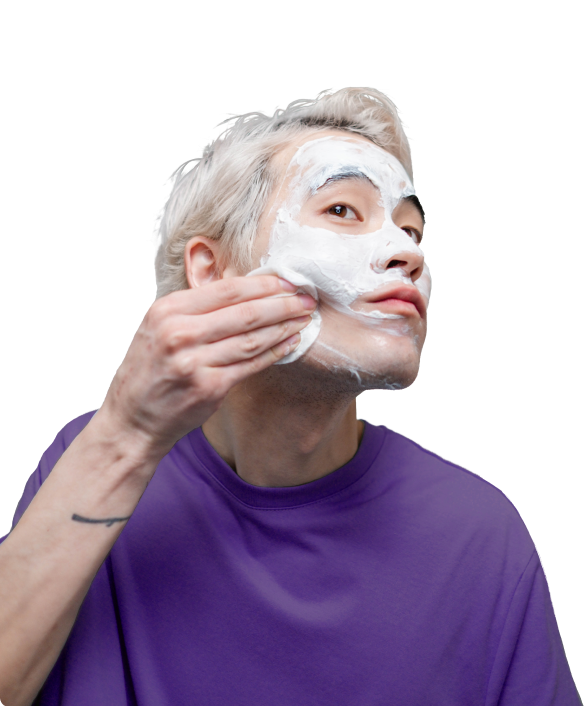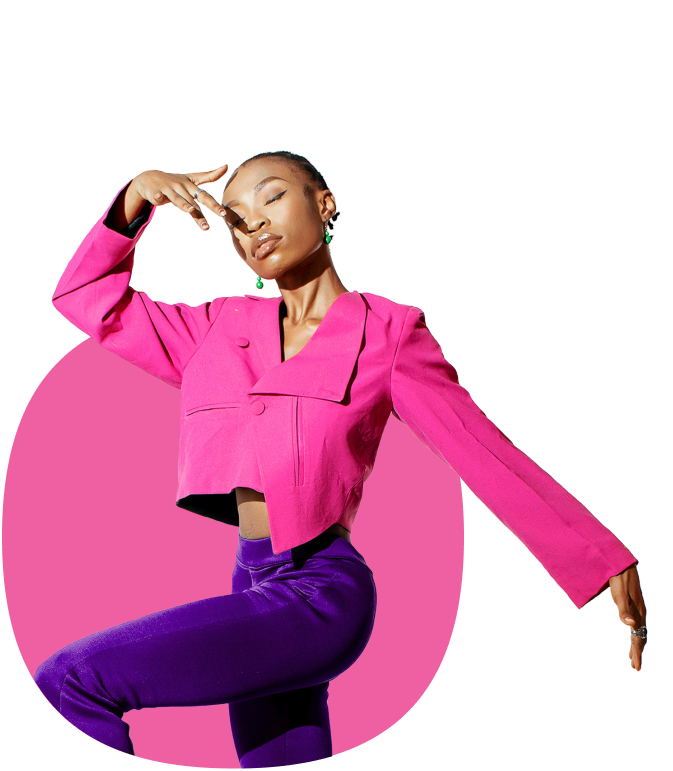More than skin deep
The new looks in personal care and what it means for marketing
 SCROLL FOR MORE
SCROLL FOR MORE
The new looks in personal care and what it means for marketing
 SCROLL FOR MORE
SCROLL FOR MORE
 WATCH OUR SUMMARY VIDEO
WATCH OUR SUMMARY VIDEO


Change it did; the beauty industry may be making a fast recovery, but to suggest the attitudes of all consumers are returning to what they were before couldn’t be further from the truth. Concealed by the pandemic, new routines, behaviors, and attitudes are redefining the beauty landscape.
Lockdown was a chance to experiment. Without the steady hands of a professional, consumers’ beauty regimes were left up to them. We’ve done extensive research into consumer behaviors during this time – and long after – meaning we’re well-placed to provide insight into how this impacts cosmetics brands, retailers, and social media campaigns in 2022.
In Q1 2020, 18% of consumers purchased skincare products every month – behind the likes of makeup/cosmetics (23%). As of Q2 2021, consumers now consider both as important as one another.
In the U.S. alone, health and beauty sales rose $3.74 billion as amateur cosmetology gripped consumers in their newfound spare time. This doesn’t mean people became beauticians overnight (one look at #lockdownhaircuts will tell you that) but it was an opportunity to learn something new. For males, in particular, this was a long time coming.
Since 2018, beauty and cosmetics has proven to be the fastest-growing interest among male consumers – climbing 21% in this timeframe
Male interest in beauty has exploded in APAC markets such as China, Australia, and Indonesia, but the impressive growth in North America and Europe shows this is truly a global trend.
% of male consumers who are interested in beauty/who have purchased personal care products* in the last month
*any of the following personal care products (in-store or online) Exfoliating products, grooming & shaving products (e.g. razors), hair coloring products, hair styling products, hair styling tools (e.g. hairdryers, curlers, straighteners), make-up/cosmetics, moisturizer, skincare products

of males feel more confident about their looks than a year ago
The pandemic challenged what we know about the industry’s target audiences. Male interest in beauty/cosmetics climbed at an unprecedented rate in early 2020, when much of the world was in some form of lockdown, just as female interest showed early signs of stagnation. In the time since however, brands have left themselves work to do if they’re to keep pace with the trend. As new beauty audiences were brought into the spotlight, purchase behaviors failed to match their level of interest – the onus is now on marketers to change this; reaching new audiences and adapting strategies to their needs.
Let’s be clear, this doesn’t mean consumers will abandon their new routines – the majority of those who made changes expect to keep to them, but there is a danger some needs aren’t being met. Reasons for this vary. For one, there’s always the possibility that there simply aren’t enough products available for some audiences.

Male (particuarly those who are heterosexual) and LGBTIQA+ consumers still continue to pip their pre-pandemic beauty interest/purchase figures, but this is changing – growth is slowing and, without intervention, set to decline. Brands urgently need to match this enthusiasm with product variety in order to avoid a similar pattern of decline witnessed among female consumers.
At the same time, it’s a sign that some brands aren’t doing enough to challenge existing concerns within the industry - and a large part of that is centered on promoting inclusive beauty. Stigma toward male consumers buying beauty/cosmetic products, for example, is a very real concern and brands have a role to play in normalizing this – instead of leaving it up to social media users.
If this isn’t enough, then figures for people of color should set alarm bells ringing; interest and purchase figures have fallen 15% and 13%, respectively, since 2018 – the majority of which occurred shortly after the pandemic began. It’s unrealistic to suggest one moment changed everything – scrutiny toward a lack of products suited to darker skin tones is nothing new – but extra scrutiny on racial representation has only further highlighted this problem.
Beauty brands shouldn’t shoulder the blame alone but, as figures with the power to promote racial diversity, they have a responsibility to address these problems. As the profile of beauty buyers changes, catering to their individual needs will be crucial in 2022, and beyond.
Consumers, for the most part, have made changes to their beauty/skincare preferences by ditching the glam and simplifying things a little. A quarter of consumers say this, with other leading changes to do with buying more products that maintain natural beauty as opposed to enhancing it.
Emily Gerstell
Associate Partner at McKinsey

With time on their hands to become more acquainted (or, in some cases, unacquainted) with beauty products, consumers actually had a chance to find their own look; to “be themselves”. Some workplaces are already loosening dress codes to relieve some of the pressures that existed pre-COVID – an example of how expression and uniqueness can be promoted in the future.
But there’s still work to do.
% of internet users who agree with the following
The number of consumers who say beauty standards are changing for the better sits at 19%, and brands can help to raise this – by listening to what consumers want and adapting their messaging to ensure inclusive beauty is upheld, and makes a concerted effort to represent all types.
You need to only look at how prominent calls for more diverse models are among LGBTIQA+ and people of color in our research to see the importance of this. Challenger brands like Fenty Beauty usually come to mind here, but others are following suit, doubling down on commitments to support inclusive beauty.
Just 1 in 5 of those who purchased any beauty products in the last month say they feel represented in the advertising they see, falling to as low as 15% among LGBTIQA+ consumers in this group. This doesn't necessarily put the onus on beauty brands to change this – though steering away from filters or retouched images on social media is a growing trend – but it’s a reminder that diverse representation can go a long way.

have simplified their beauty routine in the last 12 months
That mentality can extend far beyond advertising too, and provoke food for thought among retailers of all kinds. For marginalized consumers coming in-store, speaking to employees who can reciprocate their concerns and suggest products they use themselves will make a massive difference. There’s also a need for models that look like regular people – 35% say this, climbing dramatically among people of color and LGBTIQA+ consumers. In response, marketers can be more considerate in their casting; featuring models with disabilities, skin conditions, and of different sizes to expand their appeal among these disengaged audiences.
Even the word “normal” can be polarizing – prompting several brands to remove the word entirely from packaging. In order to encourage consumers to keep to their beauty routines, big-name brands need to listen to their needs. After all, if they don’t, then challenger brands will.
A change in attitudes may have brands scratching their heads about how these apply in the future. Will consumers care less about appearance going forward, and how will this affect their routine? Moreover, what does this suggest about the products they buy?
On the whole, consumers don’t expect to spend less time getting their appearance ready ahead of an event – if anything, they’re anticipating taking longer.
% of internet users who say the following about time spent getting ready for these occasions
Many of us won’t look the same as we did back in March 2020, and this is a chance to showcase new styles, looks, and techniques. In the case of work, time spent is expected to be a lot longer than elsewhere. This makes some sense; employers may be re-evaluating their dress codes, but not their standards.
Appearance is seemingly more important in the company of colleagues than it is among family and friends – given estimated time spent getting ready for work sits ahead of a social gathering or a night out. The bottom line for brands is to ensure consumers have access to products that cater to both their specific needs and their routines.
Products that improve or maintain appearance are now just as important as ones that enhance it. Attitudes toward beauty may be changing, but that doesn’t mean looking your best is any less important.
2022 has a lot to live up to; you can thank hopes of a new “roaring 20’s” for that. While the idea of a new Jazz Age likely has businesses in the retail, hospitality, and nightlife sectors giddy with anticipation, marketers need to wise-up to a change in consumer mentality. There’ll certainly be a resurgence in appearance-based behaviors but, this time, it’ll be on a much larger scale. People don’t necessarily look at beauty products in the same way they used to, granting new opportunities for brands and doing away with pre-COVID challenges.
This means drafting campaigns that speak to everyone; leveling the playing field through tailor-made products, and utilizing campaigns that promote inclusive beauty and the values of diversity and individuality it stands for.
Let’s be clear; beauty standards won’t change overnight, but enthusiasm for these kinds of products can.

